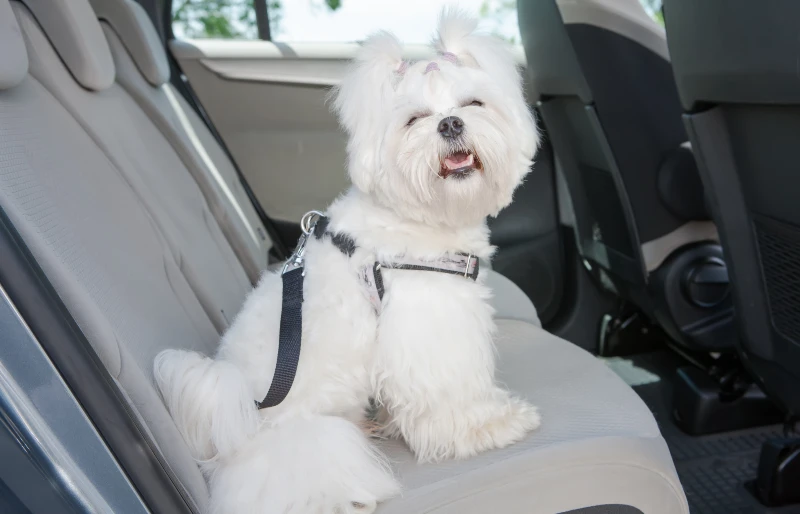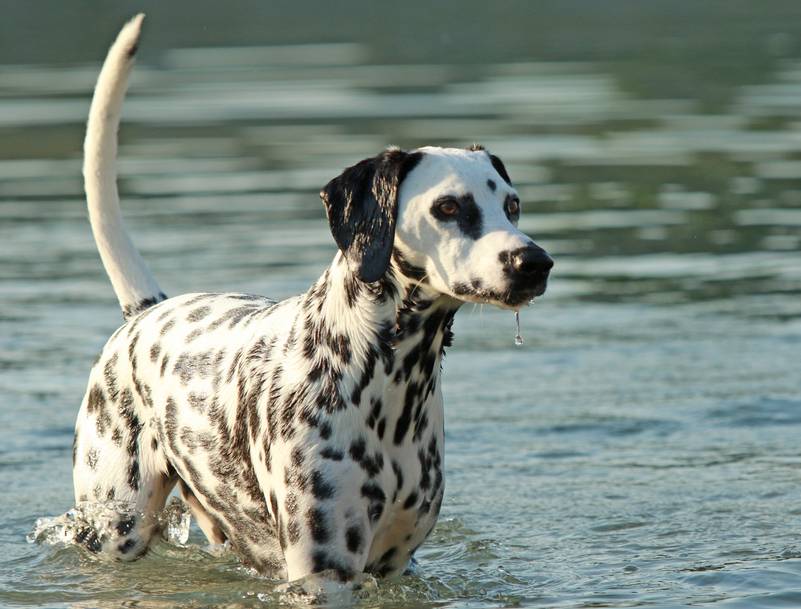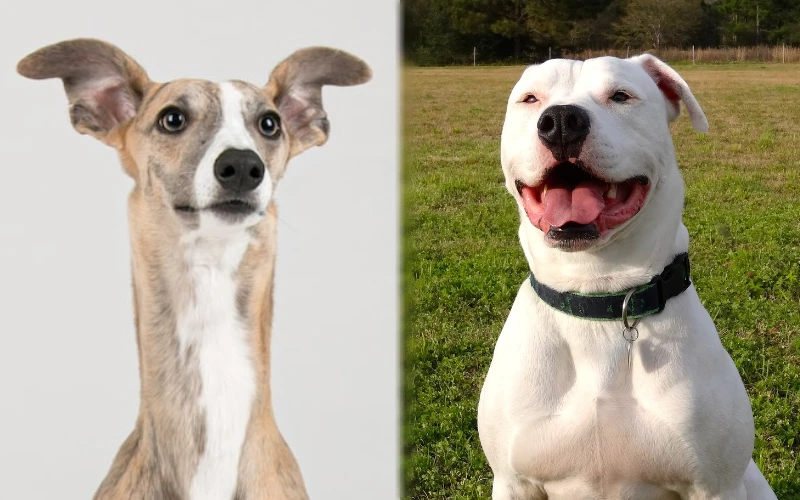When to Switch a Great Dane From Puppy Food? Vet-Approved Tips

Updated on
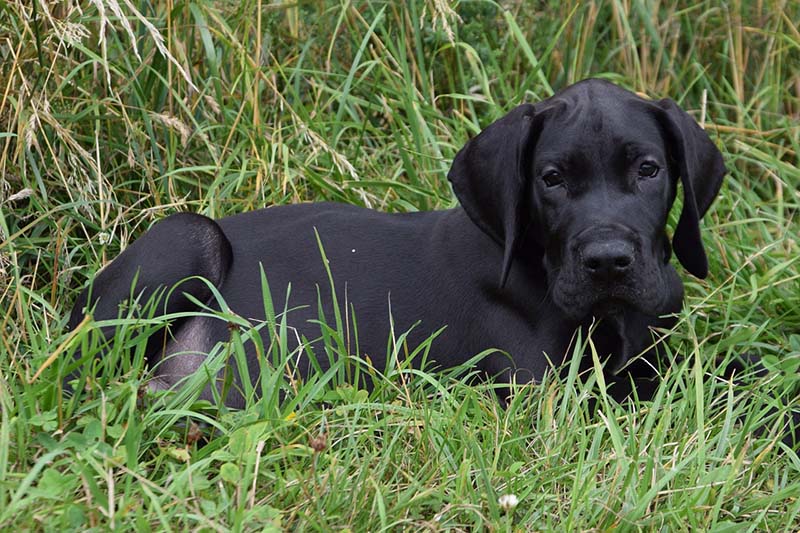
Like children, our pets grow so fast. It seems like they go from adorable puppies to full-sized dogs overnight. This is much more noticeable if your dog is a giant breed like a Great Dane. While their size and features quickly become mature and adultlike, their bodies are still developing and growing. In fact, it can take as long as two years for your gentle giant to be fully grown.
While some breeds can be transitioned to adult food by 12 months old, this is not the case with a Great Dane. Great Danes are a giant breed that should not be transitioned to adult food until 18 months or older.
How to Transition Your Great Dane from Puppy to Adult Food
Obviously, if it is not broken, don’t fix it. It may not be necessary to switch your dog’s food. If you feed your dog high-quality food and is not overweight, you may need not change its food.
If you want to switch to an adult or better-quality food, however, the transition should be made slowly and properly. Doing so will help to limit digestive upset so the change is comfortable and enjoyable for your pet.
Here is a 4-day plan you may want to consider when you are switching foods.
- Meal 1: 25% new food and 75% old food
- Meal 2: 50% new food and 50% old food
- Meal 3: 75% new food and 25% old food
- Meal 4: 100% new food
Hopefully, the transition will be smooth and tasty for your pet. If not, seek the advice of your veterinarian—especially if the dog is exhibiting significant behavioral changes or experiencing digestive issues like vomiting or diarrhea.
It may be best to continue to use the same brand and flavor when switching from puppy to adult food. It can help to lessen the degree of side effects and prevent allergic reactions to the food.
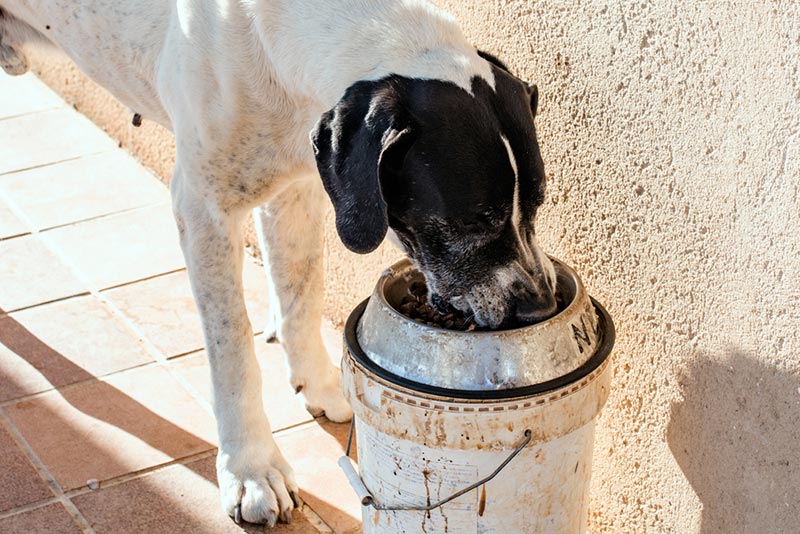
When Is a Great Dane Fully Grown?
Great Danes are considered a giant breed that can grow quickly. They are often referred to as the “gentle giants.” They were given the nickname because of their generous size and gentle demeanor.
Between the age of 18 and 24 months, the Great Dane is considered fully grown with their biggest growth spurt between four and six months old. The breed will reach its maximum height by 18 months, but it will continue to gain muscle beyond 18 months.
The Average Size of a 6-Month-Old Great Dane
Although the size of a 6-month-old Great Dane will vary by the individual, the average size of a 6-month-old pup is between 26–33 inches tall and 65 to 100 pounds.
The Veterinary Centers of America (VCA) recommend feeding your Great Dane puppy a large breed puppy food to slow its growth rate. The VCA suggests that doing so may help to reduce the risk and severity of hip and joint problems in adult Danes. A large-breed food will help your pet grow at a healthy pace and reduce the stress on its body. It will not affect the overall size of the dog, however,
The Size of a Full-Grown Great Dane
Once again, the size of your Great Dane will depend on its environment and genetics, but these are the American Kennel Club (AKC) Official Standards of the Great Dane.
- Male Great Dane: 140–175 pounds and 30–32 inches tall
- Female Great Dane: 110–140 pounds and 28–30 inches tall
Keeping Your Great Dane Healthy
Like most breeds, Great Danes are prone to certain health issues like bloat, hip dysplasia, joint problems, and hypothyroidism. According to the AKC, Gastric Dilatation Volvulus (GDV) is the number one killer of Great Danes. Some experts suggest that while the condition is not predictable, there are things you can do to decrease the risk of canine bloat for your pet.
Playtime and Exercise
For one hour prior to and after eating, avoid any exercise or heavy play.
Small Meals
Feed your pup small meals several times a day. This will prevent the dog from eating too much or too fast.
Conclusion
The Great Dane is a giant breed that needs to grow at a healthy rate to avoid hip and joint problems and should remain on puppy food for a minimum of 18 months. It is also important to be sure to feed it a high-quality diet and avoid heavy activity close to mealtime. As always, we recommend that you seek the advice of your vet to ensure your Great Dane is getting the proper nutrition for healthy growth and development.
Featured Image Credit: Jürg Roth, Pixabay



